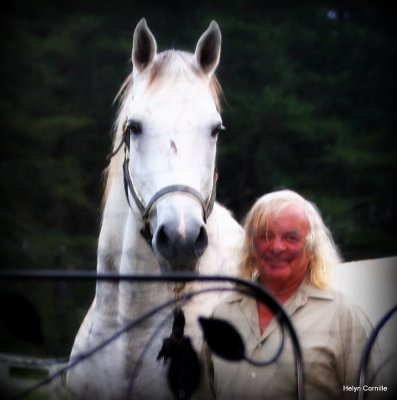Body schema
Body schema.

"The brain is incredibly clever at finding alternative means to overcome an impairment, all to accomplish goal-oriented actions. The challenge of distinguishing what the primary loss of function is and what is a compensatory strategy is very complex." (Scott Grafton) Applied to the horse's education, Scott Grafton explains why the concept of the correct aids does not work. The horse responds by finding alternatives, protecting and compensating for muscle imbalance or other "impairment." The compromise allows the horse to execute the move but with a dysfunction minimizing the quality of the performance and aggravating the risk of injury. Already in the nineteenth century, academic equitation could have aimed in the direction of actual knowledge. The neurologist's Henry Head and Gordon M. Holmes recognized the concept of integrity that they referred to as the all-at-once problem where the brain needs to keep track of the entire body all at once. They coined the term "Body Schema" to embrace the dynamic properties of the body map. The body and the brain help each other, but the body functions at a level of sophistication far more elaborate than our ancestors were aware of.
The realization that there was a close tie between the feeling of the body posture and movement was suggested in the early nineteenth century by the Scottish anatomist Charles Bell. Bell's idea of a "sixth "muscle sense" fueled debates between the subjective sense of conscious effort and the paradoxical lack of conscious awareness of posture or movement. Exploring the thought that the body could measure changes of posture before they enter consciousness could not be integrated into the principle of submission. The psychology or traditional equitation has to be at the level of stimulus-response. The concept of obedience could not conceive that the horse's body and brain willingly orchestrate the horse's whole physique to respond to a pressure of the leg or other stimulus. Equine neurophysiology was too far ahead of equine psychology. The horse has to be submitted and enslaved into absolute obedience.
It would have been extremely pertinent for anyone in the nineteenth century to explore the concept of tensegrity, which combines tension or tone and integrity of the whole body. However, it would have skipped one century and half of gestures and formulas unrelated to the way the horse's physique effectively functions. Sensory organs within the joints, ligaments, tendons, and muscles provide information about body position. However, "A sensor in the Achille talon will be responsive to how stretched it is, but this tension could reflect either the angle of the ankle or the tension of the gastrocnemius muscle attached to the tendon. To make sense of position, this evidence needs to be integrated with sensors in the muscles of the lower leg. Together, all this position signaling is combined and called proprioception" (Scott Grafton). A movement is a perpetual alteration of position, and the brain is building up a postural model of ourselves that continually changes.
The brain can be fooled as the information provided by sensors can be distorted by vibration, shifts, rider's movements, etc. This is one of the reasons why we place stability as the number one quality of a saddle. Thick paddings, unnecessary wide trees, and gullets cause shifts and movements that distort the horse's perception of the rider and the rider's perception of the horse. Same with the rider squeezing the thighs above the knees and having the calves batting the horse's flanks. Same with the rider moving the lumbar vertebrae exaggeratedly. The faults might be absorbable with the gross equitation of gestures, but disturb subtle equitation of nuances in muscle tone. The German army thought that the impact of vibrations on position sense was serious enough that they conducted a study on the disruption of hand perception that might occur from the fast roping, that special operations use to slide down a line hanging from a helicopter quickly. They were concerned that the intense vibrations from a braided rope would overstimulate the position sensors in the hands, and the soldiers would reach the ground, not knowing where their trigger finger was. The results were compelling enough to recommend changes in the texture of fast ropes.
Actual riders are familiar with the concept of fascia connecting the whole body, that a muscle never works alone. Dr. Stephen Levin describes how every part of an organism, from molecular to the gross anatomy, is integrated by a mechanical system into a complete functional unit. And yet, the tradition continues to teach the equitation of body parts. Often, equestrian lessons sound like Macbeth's definition, a tale full of sound and fury, signifying nothing. Instead, the equitation of harmonic tensegrity is about precise and subtle nuances in muscle tone. It is a delight of finesse, beauty, feeling, and power. Riding a highly energetic and powerful athlete through subtle nuances in muscle tone is the whispering that is promised by crude techniques. Still, while the whispering of crude methods is full of sound and fury signifying nothing, the harmonic tensegrity made possible by the practical application of advanced science is accessible by many as long as, paraphrasing Leo Tolstoy, one is willing to use one's mind without prejudice and without fearing to understand things that clash with one's customs, privileges, or beliefs.
Jean Luc Cornille


 twitter
twitter facebook
facebook google
google yahoo
yahoo linkedin
linkedin